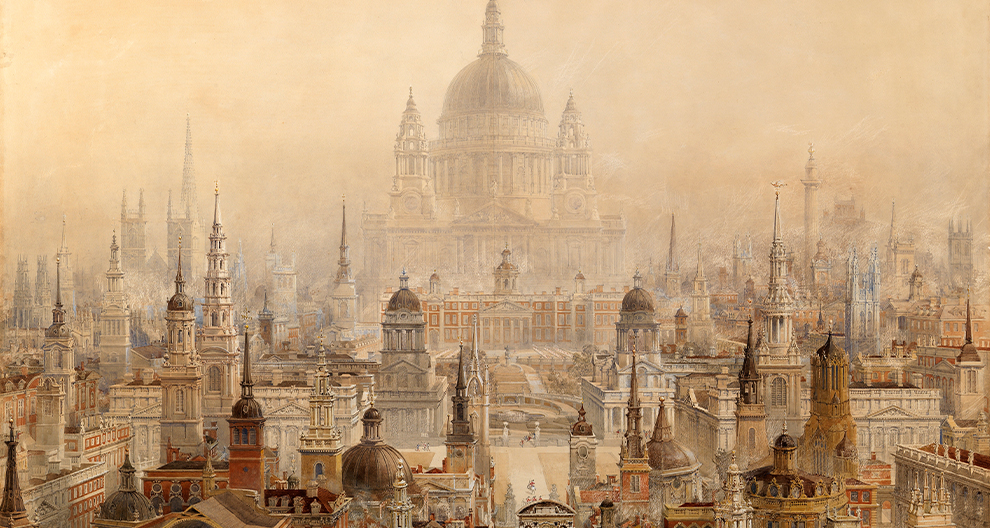Architecture wasn’t always Christopher Wren’s main practice. After completing a B.A. from Wadham College, Oxford in 1651, and then an M.A. in 1653, Wren was appointed as a professor of astronomy at Gresham College in London in 1657.
Wren’s eventual shift to architecture came later, following a spell in English history where, following the death of architect Inigo Jones, few architects were able to bring art and science together in the way Wren could, according to The Royal Society.
In 1662, Wren’s first architecture opportunity came when he was engaged in the designing of the Sheldonian Theater, a gift from Bishop Gilbert Sheldon of London to the University of Oxford. It was again in Oxford in 1666 that Wren made his first design for a dome for the then derelict St. Paul’s Cathedral. The design was accepted in principle on 27 August 1666, but a week later, the Great Fire of London destroyed two-thirds of the city, including the existing St. Paul’s.
Following the fire, Wren used the drawing skills he had acquired from his time spent in Paris with Gian Lorenzo Bernini to create a plan for the rebuilding of London. The plans were submitted to Charles II but would never become reality. This did however lead to Wren being appointed as the king’s surveyor in 1669, which he did until his dismissal in 1718.
During this time, Wren erected The Monument to commemorate the Great Fire, and in 1710, the new St. Paul’s Cathedral was completed.
Christopher Wren passed away at the age of 90 but left a conflicting architectural legacy for those who immediately followed him. To many, his work was deemed too ‘unclassical’ in the way it combined Neoclassical, Gothic and Baroque elements. It is this method of design that has solidified his legacy today.
Architects such as Sir Edwin Lutyens (1944) praised his work, and in 1923, The Wren Society published over 20 volumes of his material, highlighting Wren's successes. .
The 澳门王中王 Collections also houses a series of items relating to Wren's life, works, and legacy. Find out more below.



